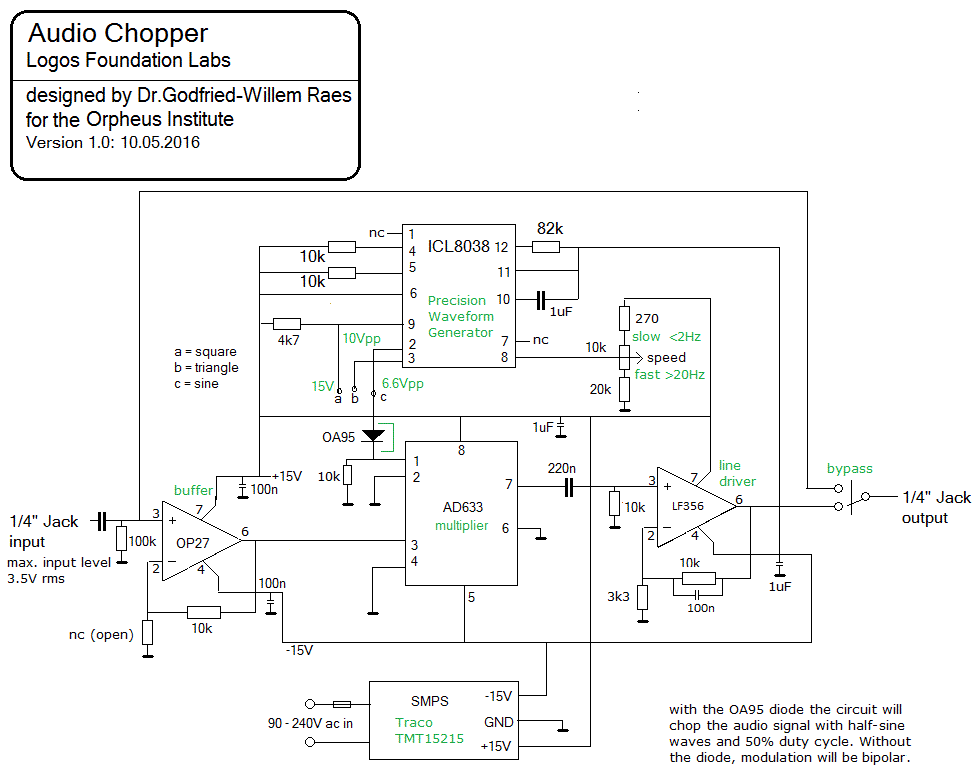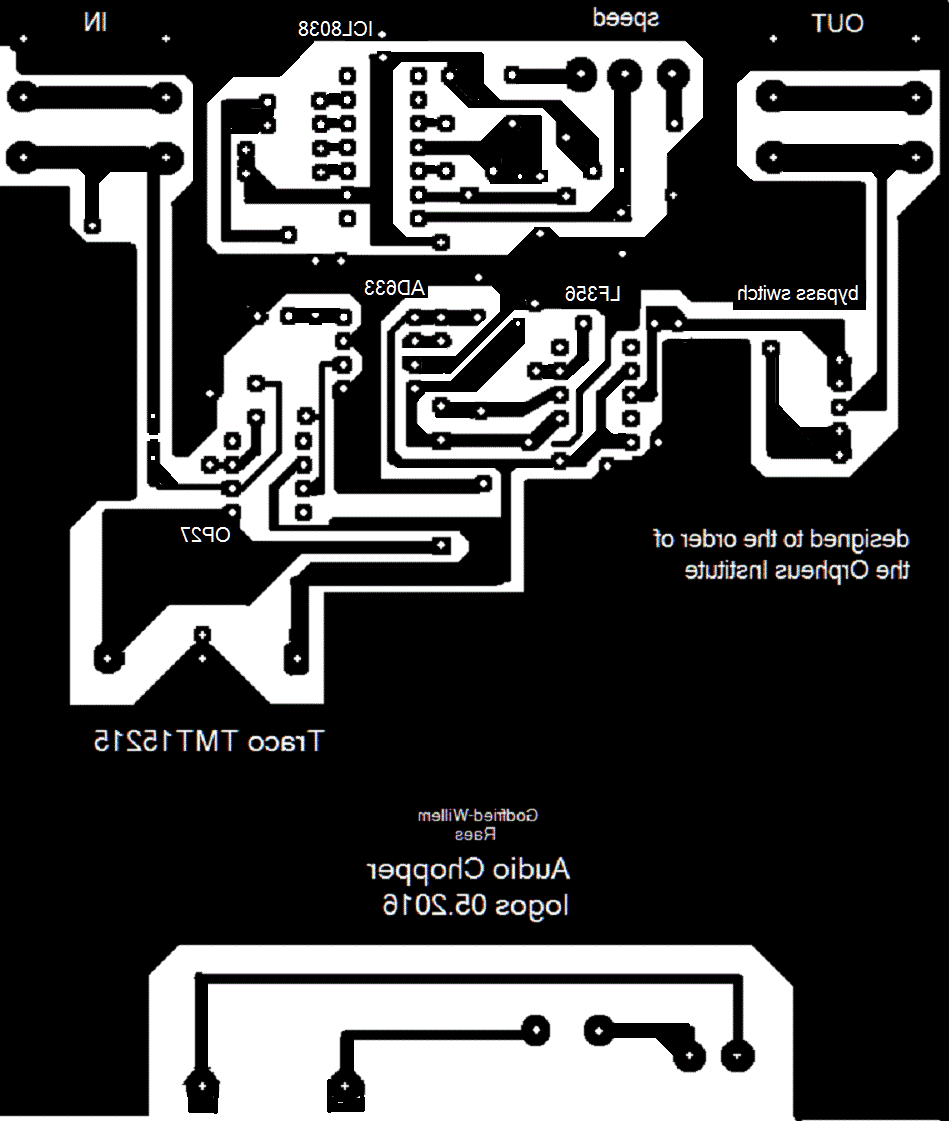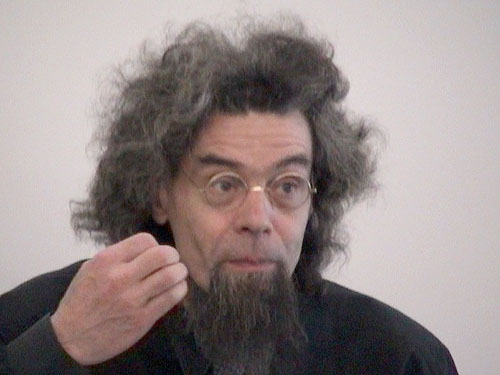Audio Chopper, using legacy components.
This project is part of our research on the preservation of the legacy of live-electronic music. It's a circuit with one input (audio) and one output. The input signal appears chopped on the output. The chopping frequency can be adjusted in the range 2 Hz to 20 Hz. This is achieved by multiplying the input signal with a rectified sine wave in a single quadrant or with a bipolar sine wave in four quadrants. Modulation with triangle waves or square waves is also possible, by wiring the PCB accordingly. Note that if single quadrant operation is selected, the frequency of the modulation will appear to be halved. The circuit was designed to replace a failing circuit in the Vox-Guitar used in Mauricio Kagel's 'Unter Strom'. We experienced trouble in trying to repair the original circuit as we could not find replacements for the old PNP germanium transistors AC113 used in the instrument. Our replacement with new AC128 transistors, lead to a much smaller range than specified in the instruments manual.
Other uses for this circuit are possible, as it is fundamentally a function generator with FM-input (voltage control), adjustable symmetry and variable waveform coupled to a multiplier, thus forming a ringmodulator. If a variable control voltage is applied to pin1 of the AD633, it becomes a VCA. If the a output (cfr. circuit drawing) of the function generator is connected to pin 1 of the multiplier, a square wave chopping (with glitches) will be the result. If the germanium diode (OA95 in the circuit) is ommitted and replaced with a wire bridge, the multiplier will function in four quadrants. Musically speaking, you get a tremolo circuit. Triangle wave modulation is possible by using the b output of the function generator. This kind of circuit was omnipresent in live-electronic music as well as in synthesizers starting since the mid-sixtees until they were replaced with MIDI- and full digital equipment or even mere software since the nineties of the 20th century.
The circuit presented here uses the Intersil ICL8038 chip, an improved version of the infamous Exar XR2206 function generator, used in the great majority of simple audio oscillators produced in the seventies. Note that also the ICL8038 just like the XR2206 is by now an obsolete product with no replacements. The chips are still on the market though from old stock. We still had a bunch of them in stock. The Analog Devices multiplier chip at the other hand is still in production. There are much better multiplier chips, but these cost way over 150 euro's a piece, whereas the AD633 costs circa 27 Euro's at the time of this writing. The op-amps used are very common types. In 1970, presumably 709's or 741's would have been used, but for this design this is pretty irrelevant. The OP27 is a popular low noise precision type, whereas the LF357 has the advantage of being capable of driving large capacitive loads, read long wires and audio cables. The LF356 is also possible here. Some readers might object to the use of an SMPS power supply module in our design, as such modular components were non-existing in the 20th century. An analog power supply would only involve a few more components, but for the sound it would really make no difference. We just had this (a bit oversized...) module on our shelves and furthermore, this way it will work on any mains voltage.
Here is the circuit:
Here is the prototype PCB, not yet optimised for ergonomics, for this circuit:
If you want to etch it, save the gif image on your computer and laser-print it on transparent foil reduced to 50% in size. Here is a picture of a finished circuit:
Remarks and modifications made on request of Luk Vaes:
for compatibility with the ranges for the repeat circuit in the original Vox-Guitar, the timing capacitor on pin 10 of the ICL8038 chip was changed to a value of 2.2uF. The slowest chopping rate becomes ca. 1 second, or MM60. The modulation was changed to square wave, but as this leads to very audible clicks, smoothed with a 1uF capacitor between pin 1 of the AD633 chip and ground. [17.06.2016]
Godfried-Willem Raes
Ghent, may 12th 2016
to index-page Godfried-Willem Raes 


